
Waterproof enclosures are a crucial component in various applications, ensuring that sensitive equipment and connections remain safe and functional even when exposed to water or moisture. They act as a barrier, preventing water, dust, and other contaminants from damaging the enclosed components. From outdoor electrical installations, where they protect against rain and weather elements, to underwater equipment, where they need to withstand significant pressure while keeping water out, waterproof enclosures play a vital role in ensuring the safety and longevity of critical components in diverse environments.
This guide aims to provide a comprehensive overview of waterproof enclosures, covering aspects such as standards, connections, materials used (including sheet metal and plastic), and real-world examples.
Unveiling the Necessity of Waterproof Enclosures
In a world where technology is integrated into nearly every aspect of daily life, the need for safeguarding electronic equipment and connections against environmental factors has never been greater. Enter waterproof enclosures, the unsung heroes that ensure the smooth functioning of devices in the most challenging conditions.
Let’s dive into the details of what waterproof enclosures are, and why they are so essential in today’s world.
Demystifying Waterproof Enclosures
A waterproof enclosure is a protective casing designed to house electrical or electronic components and protect them from water, moisture, and other environmental contaminants. Made from various materials, including plastic, metal, or fiberglass, these enclosures are meticulously designed and tested to ensure they meet specific standards of water resistance and durability. Their primary function is to provide a watertight seal around the enclosed components, preventing water ingress and thereby ensuring the safety and functionality of the equipment inside.
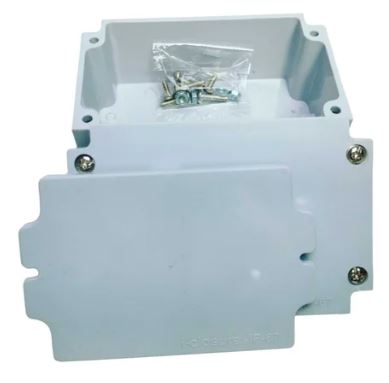
Waterproof enclosure
Typically, the waterproofing ability of an enclosure is measured using the Ingress Protection (IP) rating system. This system comprises two digits, with the first digit indicating the level of protection against solid objects like dust, and the second digit indicating the level of protection against liquids. For instance, an IP68-rated enclosure offers the highest level of protection against both dust and water.
The Critical Role of Waterproof Enclosures
The importance of waterproof enclosures can’t be understated. They play a critical role in various applications, from everyday consumer electronics to specialized industrial equipment.
- Protection Against Environmental Factors: One of the key advantages of waterproof enclosures is their ability to protect sensitive equipment from environmental factors such as rain, snow, dust, and humidity. This is crucial for outdoor applications like telecommunications equipment, traffic control systems, and outdoor lighting fixtures.
- Ensuring Safety: Waterproof enclosures help in ensuring the safety of both the equipment and the users. By preventing water and moisture from coming into contact with electrical components, they reduce the risk of electrical shorts, corrosion, and other potential hazards.
- Enhancing Equipment Longevity: By providing a protective barrier against environmental contaminants, waterproof enclosures help extend the life of the enclosed equipment. This, in turn, reduces maintenance and replacement costs, leading to significant cost savings over time.
- Enabling Underwater Applications: Waterproof enclosures make it possible to use electronic equipment underwater. This is essential for applications such as underwater robotics, submersible pumps, and marine navigation systems.
Table 1: Applications of Waterproof Enclosures
| Application | Importance of Waterproof Enclosure |
|---|---|
| Outdoor Lighting | Protects against rain, snow, and humidity, ensuring continuous operation. |
| Telecommunications | Safeguards sensitive equipment from environmental contaminants. |
| Marine Navigation Systems | Enables the use of electronic equipment underwater. |
| Underwater Robotics | Protects robotic components from water ingress and pressure. |
| Submersible Pumps | Ensures the pump’s electrical components remain dry and functional. |
Decoding Waterproof Enclosure Standards
In the realm of waterproof enclosures, various standards dictate the levels of protection that an enclosure must offer to be considered suitable for different applications. Two of the most widely recognized standards in this domain are the IP Rating System and the NEMA Ratings. Understanding these standards is crucial for selecting the right enclosure for a specific application.
IP Rating System
The Ingress Protection (IP) rating system is an internationally recognized standard that defines the levels of sealing effectiveness of electrical enclosures against intrusion from foreign bodies, such as dirt and water. This standard is outlined in the IEC 60529 standard developed by the International Electrotechnical Commission.
The IP rating consists of two digits:
- The first digit indicates the level of protection against solid particles, ranging from 0 (no protection) to 6 (complete protection against dust).
- The second digit indicates the level of protection against liquids, ranging from 0 (no protection) to 8 (protection against prolonged effects of immersion under pressure).
For example, an enclosure rated as IP68 means it is dust-tight (6) and can be continuously submerged in water (8).
Table : IP Rating Chart(First digit)
| First Digit (Solids) | Level of Protection |
|---|---|
| 0 | No protection against contact and ingress of objects |
| 1 | Protection against solid objects larger than 50 mm, e.g., hands |
| 2 | Protection against solid objects larger than 12.5 mm, e.g., fingers |
| 3 | Protection against solid objects larger than 2.5 mm, e.g., tools |
| 4 | Protection against solid objects larger than 1 mm, e.g., wires |
| 5 | Dust protected, but not entirely prevented from entering |
| 6 | Dust-tight, complete protection against contact |
Table: IP Rating Chart ( 2nd digit)
| Second Digit (Liquids) | Level of Protection |
|---|---|
| 0 | Not protected |
| 1 | Protection against vertically falling drops of water, e.g., condensation |
| 2 | Protection against water droplets deflected up to 15 degrees from vertical |
| 3 | Protection against spray up to 60 degrees from vertical |
| 4 | Protection against water spray from all directions |
| 5 | Protection against low-pressure water jets from any direction |
| 6 | Protection against high-pressure water jets and waves |
| 7 | Protection against temporary immersion up to 1 meter for 30 minutes |
| 8 | Protection against continuous immersion under conditions specified by the manufacturer |
NEMA Ratings
In addition to the IP Rating System, the National Electrical Manufacturers Association (NEMA) also defines a set of standards for enclosures intended for use in specific environments. NEMA ratings consider additional factors such as corrosion and construction details. These ratings are more commonly used in North America.
The NEMA ratings range from NEMA 1 (protection against light dust and the ingress of solid foreign objects) to NEMA 13 (protection against dust, dirt, oil, and non-corrosive coolants).
Table 2: Common NEMA Ratings and their Meanings
| NEMA Rating | Description |
|---|---|
| NEMA 1 | Indoor use primarily to provide protection against contact with the enclosed equipment |
| NEMA 3 | Outdoor use to provide a degree of protection against falling rain and windblown dust |
| NEMA 4 | Indoor or outdoor use to provide a degree of protection against windblown dust and rain, splashing water, and hose-directed water |
| NEMA 6 | Indoor or outdoor use to provide a degree of protection against hose-directed water and the ingress of water during occasional temporary submersion at a limited depth |
Different Materials Used in Waterproof Enclosures
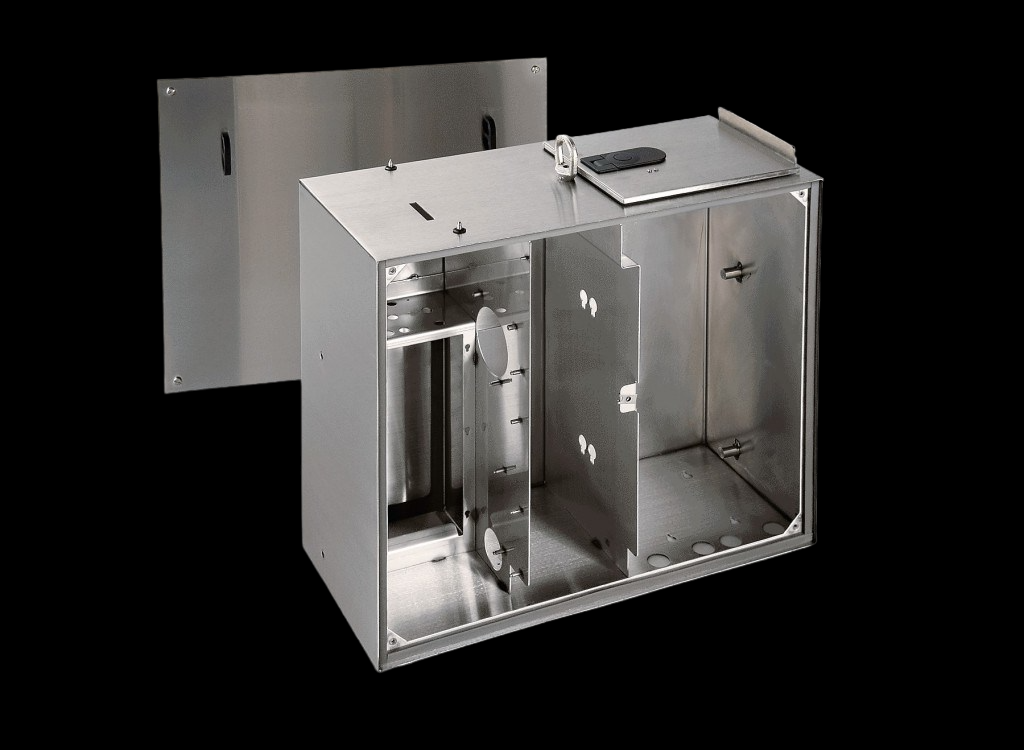
Aluminum waterproof enclosure
Waterproof enclosures play a critical role in protecting electrical and electronic components from water, dust, and other environmental elements. The material selected for a waterproof enclosure directly impacts its performance, durability, and suitability for a specific application.
One of the most commonly used materials for waterproof enclosures is plastic. Plastics are lightweight, cost-effective, and can be easily molded into various shapes and sizes. Additionally, they offer excellent electrical insulation properties. Common types of plastics & metal used for waterproof enclosures include:
- Polycarbonate (PC): PC is a strong and durable plastic material that offers excellent impact resistance. It is also UV resistant, making it suitable for outdoor applications.
- Acrylonitrile Butadiene Styrene (ABS): ABS is a popular choice for enclosures due to its high strength, toughness, and resistance to chemicals and physical impacts. However, it is less UV resistant compared to PC.
- Polyvinyl Chloride (PVC): PVC is resistant to water, chemicals, and corrosion, making it suitable for harsh environments.
- Aluminum: Aluminum is lightweight, corrosion-resistant, and offers good thermal conductivity. It is commonly used for outdoor applications and in environments where weight is a critical consideration.
- Stainless Steel: Stainless steel offers excellent corrosion resistance and mechanical strength. It is commonly used in food and beverage, pharmaceutical, and marine applications.
Table 1: Comparison of Common Materials for Waterproof Enclosures
| Material | Pros | Cons |
|---|---|---|
| Polycarbonate (PC) | High impact resistance, UV resistant, lightweight | Less chemical resistance compared to other plastics |
| ABS | High strength, toughness, chemical and impact resistance | Less UV resistant compared to PC |
| PVC | Water, chemical, and corrosion-resistant | Less impact resistant compared to ABS and PC |
| Aluminum | Lightweight, corrosion-resistant, good thermal conductivity | More expensive compared to plastics |
| Stainless Steel | High corrosion resistance, mechanical strength | Heavier and more expensive compared to aluminum and plastics |
Design Considerations for Waterproof Enclosures
Designing a waterproof enclosure involves multiple considerations to ensure that the enclosure will adequately protect the internal components from water, dust, and other environmental factors. Below are some key design considerations for waterproof enclosures:
Table 1: Summary of Design Considerations for Waterproof Enclosures
| Consideration | Description | Examples/Solutions |
|---|---|---|
| Material Selection | The material selected should be suitable for the application and environment. | Plastics (e.g., polycarbonate, ABS, PVC), metals (e.g., aluminum, stainless steel), composites. |
| IP Rating | The IP rating indicates the level of protection against solids and liquids. | An IP67-rated enclosure provides dust-tight protection and can be temporarily submerged in water. |
| Mechanical Strength | The enclosure should withstand physical impacts, loads, and stresses during its service life. | Selecting a material with high tensile strength, reinforcing the enclosure walls, adding ribs or gussets. |
| Thermal Management | Heat generated by the internal components should be adequately dissipated. | Selecting a material with good thermal conductivity, adding ventilation openings or heat sinks, using thermal insulating materials. |
| EMC (Electromagnetic Compatibility) | The enclosure should provide adequate shielding against EMI and RFI. | Using a conductive material or coating, adding EMI/RFI gaskets or seals. |
| Accessibility and Maintenance | The enclosure should allow easy access to the internal components. | Using removable covers or panels, incorporating access ports or openings. |
| Aesthetics | The appearance of the enclosure may be important for some applications. | Selecting a material with a pleasing texture or finish, adding decorative features such as logos or graphics. |
| Cost | The cost of the enclosure should be within the project budget. | Selecting a cost-effective material, optimizing the enclosure design, using standard off-the-shelf components. |
Waterproof Connections for Enclosures
Waterproof connections are vital in ensuring that enclosures maintain their waterproof properties. These connections can be made through a variety of methods such as using seals and gaskets, welding, insert molding, and over-molding. The type of connection used depends on the material of the enclosure, its intended use, and the level of water resistance required.
Seals & Gaskets
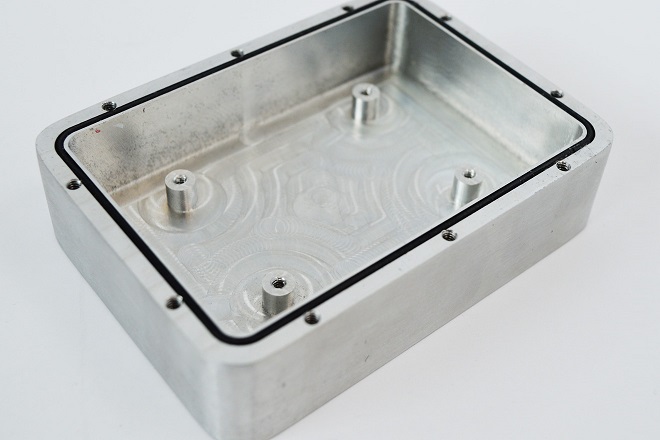
Submerged gasket on waterproof aluminum enclosure
Seals and gaskets are often used to create waterproof connections between the components of an enclosure. Gaskets are typically made from flexible materials like rubber or silicone, which can create a tight seal between two surfaces when compressed. Seals, on the other hand, are used to close the gap between two mating surfaces and prevent the ingress of water or other fluids. For instance, O-rings are a common type of seal used in various applications to prevent water ingress. It is important to select the right type of seal or gasket for the application, as different materials offer different levels of water resistance, durability, and compression set.
- Material Selection: It is important to select the right material for the gasket or seal. Common materials include EPDM, silicone, and neoprene, each with its own advantages and disadvantages.
- Compression Set: This refers to the ability of the gasket or seal to maintain its original shape after being compressed. A lower compression set is desirable for maintaining a long-lasting seal.
- Durability: The gasket or seal material should be resistant to the environmental conditions it will be exposed to, such as UV light, ozone, and temperature extremes.
Welding
Welding is a method used to create a waterproof connection by fusing two pieces of metal together using heat. This method creates a strong, permanent bond that is resistant to water and other environmental factors. However, welding can only be used with metal enclosures and is not suitable for plastic or composite materials. There are several types of welding methods available, each with its own advantages and disadvantages.
- Arc Welding: This is the most common type of welding, where an electric arc is used to generate heat to melt the metal surfaces being joined.
- MIG Welding: This method uses a wire feed welder to create the weld, which can be easier to use and results in a cleaner weld.
- TIG Welding: This method uses a tungsten electrode to create the weld, resulting in a very strong and clean weld. However, it requires more skill and experience to master.
Insert Molding
Insert molding is a process where a preformed part, typically made of metal, is inserted into a mold, and plastic is then injected around it. This creates a strong bond between the metal and plastic parts, making it suitable for creating waterproof connections in plastic enclosures. Insert molding is often used to create waterproof connections for cable glands, connectors, and other components that need to pass through the enclosure wall.
- Material Compatibility: It is important to select materials that are compatible with each other to ensure a strong bond is formed.
- Mold Design: The design of the mold is crucial for ensuring the metal insert is properly aligned and that the plastic flows correctly around it.
- Process Control: The injection molding process needs to be carefully controlled to ensure consistent results and avoid defects such as voids or sink marks.
Over-Molding
Over-molding is a similar process to insert molding, but instead of inserting a preformed part into the mold, the first material is molded, and then a second material is molded over it. This creates a strong bond between the two materials and can be used to create waterproof connections in both plastic and metal enclosures. Over-molding can also be used to add a soft, grippy surface to a hard plastic part, or to add a waterproof seal around a cable or connector.
- Material Compatibility: As with insert molding, it is important to select materials that are compatible with each other to ensure a strong bond is formed.
- Mold Design: The design of the mold is crucial for ensuring the first material is properly aligned and that the second material flows correctly over it.
- Process Control: The over-molding process needs to be carefully controlled to ensure consistent results and avoid defects such as voids or sink marks.
Real-world examples of Waterproof Enclosures
Waterproof enclosures are a crucial component in a wide variety of applications. They are designed to protect sensitive equipment and connections from water, moisture, and other environmental factors, ensuring their safety and functionality. Here are some real-world examples where waterproof enclosures play a pivotal role.
1. Outdoor Electrical Installations
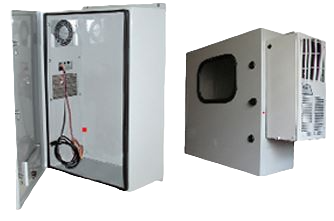
Waterproof enclosure for outdoor electrical installation
Electrical installations that are located outdoors, such as streetlights, traffic signals, or electric vehicle charging stations, require waterproof enclosures to protect the electrical components from rain, snow, and other environmental factors. These enclosures are typically made of durable materials such as stainless steel or polycarbonate and have a high IP rating to ensure they are water and dust-tight.
2. Marine Equipment
Equipment used in marine environments, such as navigation systems, communication devices, or sensors, must be housed in waterproof enclosures to protect them from the corrosive effects of saltwater and the harsh marine environment. These enclosures are often made of corrosion-resistant materials such as stainless steel or marine-grade aluminum and are designed to withstand the high pressures encountered underwater.
3. Industrial Automation
In industrial automation, waterproof enclosures are used to house control systems, sensors, and other electronic components that need to operate in environments with high levels of moisture, dust, or chemical exposure. These enclosures are typically made of robust materials such as stainless steel or fiberglass-reinforced plastic and are designed to provide a high level of protection against environmental factors.
4. Outdoor Communication Equipment
Communication equipment located outdoors, such as cell towers, radio antennas, or satellite dishes, requires waterproof enclosures to protect the electronic components from the elements. These enclosures are often made of durable materials such as galvanized steel or polycarbonate and are designed to withstand extreme weather conditions.
5. Underwater Equipment
Equipment used underwater, such as submersibles, remotely operated vehicles (ROVs), or underwater cameras, requires waterproof enclosures to protect the electronic components from water ingress and the high pressures encountered at depth. These enclosures are typically made of materials with high compressive strength such as stainless steel or titanium and are designed to be completely watertight.
Read More:
- Plasma Cutting Stainless Steel: Techniques, Grades, and Advantages
- 3D Printing Plastics: Which Types of Plastics are Used in 3D Printing?
- Plastic CNC Machining – Types of Plastic for CNC Machining
- Foam Injection Molding: Types, Process, and Applications
- Polishing Process Explained, learn how to Make Your Parts Shine
Summing Up
Waterproof enclosures are a critical component in ensuring the safety and functionality of electrical and electronic equipment in various applications. Understanding the standards, materials, and design considerations associated with waterproof enclosures is essential for selecting the right product for your application. This guide has provided a comprehensive overview of waterproof enclosures, covering key aspects such as standards, materials, connections, design considerations, and real-world examples. With this knowledge, you will be better equipped to make informed decisions when selecting and designing waterproof enclosures.
Prolean offers comprehensive enclosure manufacturing services tailored to meet your specific needs. From design and material selection to fabrication and finishing, we provide end-to-end solutions for waterproof enclosures that ensure the safety and functionality of your equipment in any environment. Contact us for reliable, high-quality enclosure manufacturing.
FAQ’s
What is a waterproof enclosure?
A waterproof enclosure is a protective casing designed to house and protect electrical or electronic equipment from water, moisture, and other environmental elements.
Why is it important to use waterproof enclosures?
It is essential to use waterproof enclosures to protect sensitive electrical and electronic components from water, moisture, and other environmental factors. This ensures the safety and functionality of the equipment, thereby preventing costly damages, malfunctions, and downtime.
What are the key factors to consider when selecting a waterproof enclosure?
Key factors to consider when selecting a waterproof enclosure include the environmental conditions, the required IP rating, the material, the size and shape of the equipment to be housed, mechanical strength, thermal management, electromagnetic compatibility, aesthetics, and cost.
What is the IP rating system?
The IP (Ingress Protection) rating system is a standard used to define the level of protection an enclosure provides against solids (e.g., dust, dirt) and liquids (e.g., water). It consists of two numbers; the first indicates the level of protection against solids, and the second indicates the level of protection against liquids. For example, an IP67-rated enclosure provides dust-tight protection and can be temporarily submerged in water.
How can I ensure the proper sealing of a waterproof enclosure?
Proper sealing of a waterproof enclosure can be ensured by using appropriate seals and gaskets, ensuring all openings, joints, and seams are adequately sealed, using the correct type of fasteners and tightening them to the recommended torque, and regularly inspecting and maintaining the enclosure to ensure its integrity.
Can I customize a waterproof enclosure to fit my specific needs?
Yes, Prolean offer customization options for waterproof enclosures, including custom sizes, shapes, materials, colors, and features such as cutouts, mounting options, and accessories. It is important to discuss your specific requirements with us to ensure the enclosure meets your needs.

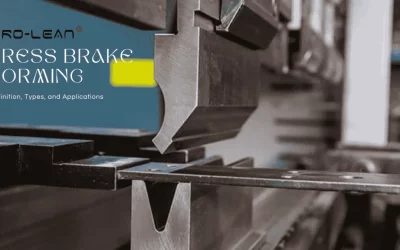
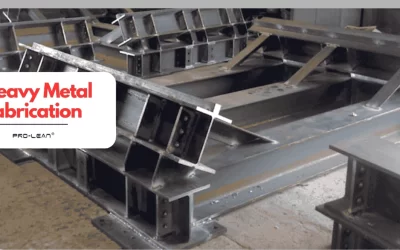
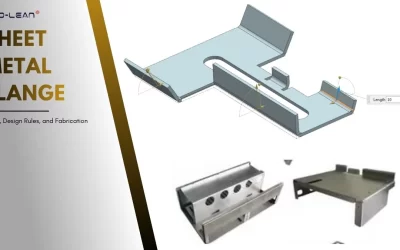
Thank you for your sharing. But, I have a question, can you help me: Which metal sheet is suitable for outdoor waterproof enclosures?
Certainly! For outdoor waterproof enclosures, stainless steel and aluminum alloys are top choices:
Stainless Steel 316: Known for its excellent corrosion resistance in harsh outdoor conditions
Aluminum 5052: Highly resistant to corrosion and ideal for enclosures that need to withstand rain and moisture. It’s also lightweight and easily formable.
Galvanized Steel (G90 coating): Affordable with a protective zinc layer, making it corrosion-resistant for general outdoor use.